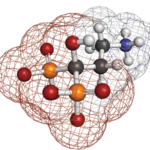(Reuters Health)—It takes 12.4 months of bisphosphonate therapy to prevent one nonvertebral fracture per 100 postmenopausal women with osteoporosis, a meta-analysis of randomized clinical trials suggests.1
Researchers examined data on 10 randomized clinical trials with a total of 23,384 women who had an osteoporosis diagnosis based on either existing vertebral fractures or a bone mineral density T score of -2.5 or lower. They found 12.4 months on bisphosphonate therapy led to an absolute risk reduction (ARR) of 0.010 for nonvertebral fractures.
“[Although] bisphosphonates are considered first-line treatment for osteoporosis, there is a time lag between the longer-term benefit in preventing fractures and the potential short-term harms and burdens of bisphosphonates, such as gastrointestinal irritation and bone/muscle pain,” says lead study author James Deardorff, MD, of the division of geriatrics in the department of medicine at the University of California, San Francisco.
Bisphosphonates appeared to have greater benefit with even longer use. At 12 months, 1.0 nonvertebral fractures were prevented per 100 postmenopausal women with osteoporosis, but by 18 months this climbed to 1.5 fractures per 100 postmenopausal women with osteoporosis.
When researchers looked at specific fracture types, they found it would take 20.3 months on bisphosphonate therapy to prevent one hip fracture in 200 postmenopausal women with osteoporosis (ARR: 0.005). It would take 12.1 months to prevent one clinical vertebral fracture in 200 postmenopausal women with osteoporosis (ARR: 0.005).
The biphosphonates included in the analysis were alendronate (Binosto, Fosamax), risedronate (Actonel, Atelvia), and zoledronic acid (Reclast).
Across the smaller studies in the analysis, the number of participants ranged from 994 to 7,765 and follow-up times in these smaller studies ranged from 12 to 48 months. The mean age of women in these studies ranged from 63 to 74 years old.
One limitation of the study is that some of the smaller trials included in the analysis used bisphosphonate dosing regimens that aren’t commonly prescribed, researchers note in JAMA Internal Medicine.1
The analysis also wasn’t designed to estimate short-term or long-term harms associated with bisphosphonate therapy, a factor that might influence treatment decisions for clinicians and patients.
Another limitation is the lack of men with osteoporosis, who might have different outcomes with bisphosphonate therapy, researchers note.
Even so, the results can serve as a starting point for conversations with patients about weighing the short-term harms and burdens associated with bisphosphonate therapy against the longer-term benefits in fracture risk reduction, Dr. Deardorff said by email.

